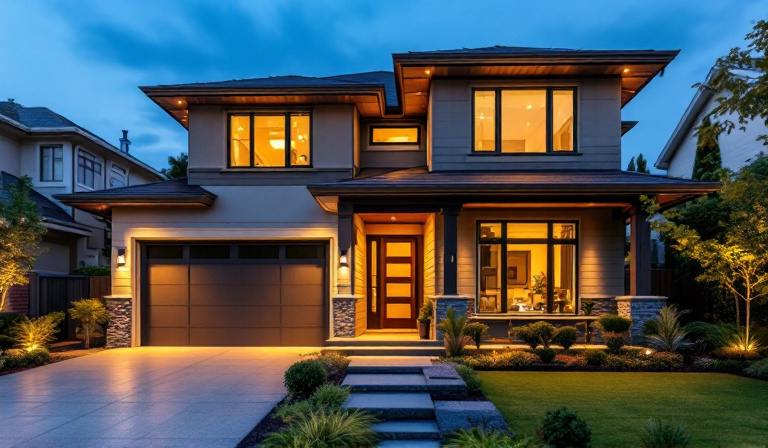
Creating a secure home environment is a fundamental step towards achieving peace of mind. Whether you're moving into a new house or looking to enhance the safety of your current residence, taking proactive measures to secure your home can protect you and your loved ones from potential threats. Here, we explore practical steps and insights to help you build a secure home, ensuring that it remains a safe haven for your family.
Assessing Your Home's Vulnerabilities
Before making any security upgrades, it's important to conduct a thorough assessment of your home's vulnerabilities. Walk around your property and identify potential weak points, such as doors, windows, and garages that could be easily compromised. Consider the following areas:
- Doors: Ensure all exterior doors are solid and equipped with high-quality deadbolt locks. Reinforce door frames and hinges to prevent forced entry.
- Windows: Check that all windows have secure locks and consider installing window bars or security film for added protection.
- Garage: Secure garage doors with a lock or deadbolt, and never leave them unlocked or open when not in use.
Enhancing Physical Security
After identifying vulnerable areas, it's time to enhance your home's physical security. Here are some effective strategies:
- Install Security Systems: Invest in a comprehensive security system that includes alarms, motion detectors, and cameras. Modern systems often come with smartphone integration, allowing you to monitor your home remotely.
- Outdoor Lighting: Illuminate the exterior of your home with motion-sensor lights. This not only deters potential intruders but also provides visibility when you arrive home after dark.
- Fencing and Gates: Erect sturdy fencing around your property and ensure gates are lockable. This adds an extra layer of security by restricting access to your property.
Utilizing Smart Technology
Smart technology has revolutionized home security, offering convenient and effective solutions. Consider integrating the following smart devices:
- Smart Locks: Replace traditional locks with smart locks that offer keyless entry and can be controlled via smartphone apps.
- Video Doorbells: Install a video doorbell to see and speak with visitors remotely. This is particularly useful for screening unexpected guests.
- Smart Cameras: Deploy smart security cameras that provide real-time footage and alerts. Many models offer cloud storage and night vision capabilities.
Practicing Good Habits
While technology and physical barriers are crucial, maintaining good security habits is equally important. Here are some practices to adopt:
- Lock Doors and Windows: Always lock doors and windows when leaving your home, even if it's just for a short period.
- Be Discreet: Avoid advertising expensive items or travel plans on social media. This information can be used by potential burglars.
- Get to Know Your Neighbors: Building a rapport with your neighbors can create a supportive community where everyone looks out for each other.
Securing Valuables
Protecting your valuables is a vital aspect of home security. Consider these measures:
- Use a Safe: Store important documents, jewelry, and other valuable items in a fireproof safe.
- Conceal Valuables: Avoid leaving valuables in plain sight, especially near windows where they can be seen from outside.
Emergency Preparedness
Being prepared for emergencies is a key component of home security. Develop a plan that includes:
- Emergency Contacts: Keep a list of emergency contacts, including local police, fire department, and trusted neighbors.
- Evacuation Plan: Create and practice an evacuation plan with your family, ensuring everyone knows the safest routes out of the house.
- First Aid Kit: Maintain a well-stocked first aid kit accessible to all family members.
Regular Maintenance Checks
Consistent maintenance is essential to ensure that security measures remain effective. Conduct regular checks on:
- Locks and Hinges: Inspect and lubricate locks and hinges to ensure they function smoothly.
- Security Systems: Test your security system periodically to ensure all components are operational.
- Outdoor Lighting: Replace bulbs and check motion sensors to maintain proper illumination.
By following these steps, you can significantly enhance the security of your home, allowing you and your family to enjoy a safer living environment. Remember, building a secure home is an ongoing process that requires vigilance and adaptation to new technologies and practices. With these strategies in place, you can rest easy knowing that you've taken the necessary steps to protect your home and loved ones.

